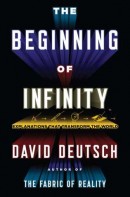 The second book by Deutsch, a physicist and pioneer of quantum computation, has gotten strong — if partly befuddled — notices. Nathaniel Stein says, “Deutsch’s world-view . . . is so novel that even a book so sparklingly clear in both its prose and its conception is, at times, quite confusing. But a reader can be grounded by the most important strand of this many-stranded world-view: the one that focuses on the importance of people, by considering what, exactly, people are.”
The second book by Deutsch, a physicist and pioneer of quantum computation, has gotten strong — if partly befuddled — notices. Nathaniel Stein says, “Deutsch’s world-view . . . is so novel that even a book so sparklingly clear in both its prose and its conception is, at times, quite confusing. But a reader can be grounded by the most important strand of this many-stranded world-view: the one that focuses on the importance of people, by considering what, exactly, people are.”
OK, maybe that doesn’t clarify much. But reviewers agree that the scope of Deutsch’s interest — which extends from science to philosophy, mathematical infinity, aesthetics, and elsewhere — makes him a thrilling read. The second paragraph of David Albert’s review, in which he compares the book to Burton’s Anatomy of Melancholy, is a keeper. It begins: “It hardly seems worth saying (to begin with) that the chutzpah of this guy is almost beyond belief, and that any book with these sorts of ambitions is necessarily, in some overall sense, a failure, or a fraud, or a joke, or madness.” He liked the book, a lot.
John Horgan admits he was probably assigned to review the book by editors who thought he would entertainingly slam it — Horgan’s terrific 1996 book The End of Science takes a decidedly more pessimistic view about how much more the field can teach us — but he ended up being inspired by Deutsch’s sunnier view, even though he writes, “Deutsch’s optimism sometimes resembles that of a man standing on a mountaintop, high above the problems afflicting us ordinary folk in the lowlands.” Horgan says:
Making the case for science’s open-endedness, Mr. Deutsch mounts a compelling challenge to scientific reductionism, which explains all phenomena in terms of their physical components. Yes, atomic theory, chemistry and genetics have worked spectacularly well at explaining many features of nature. But small-scale processes, the author notes, spawn so-called emergent phenomena that require understanding on their own terms. Bodies give rise to minds, which in turn give rise to ideas, which have no specific physical properties but can nonetheless influence human behavior in profound ways, as the Enlightenment itself demonstrates.
You can watch Horgan and Deutsch discuss the book and other subjects here. The clip is worth watching on a purely visual level, too, since Deutsch is a sleepy-eyed, bowl-haired genius who looks like he might have been designed by Jim Henson.
The Economist says that Deutsch’s first book, The Fabric of Reality, made him many fans, who will not be disappointed in the follow-up: “The Beginning of Infinity is equally bold, addressing subjects from artificial intelligence to the evolution of culture and of creativity; its conclusions are just as profound.”
The Beginning of Infinity by David Deutsch
Viking, 496 pp., $30.00

 Dana Spiotta’s second novel, Eat the Document, received raves and was a finalist for the National Book Award. Her third, Stone Arabia, is attracting similar praise. It tells the story of Nik, a once-aspiring musician who meticulously chronicles a make-believe career in the pages of a voluminous journal, and his sister Denise, increasingly worried about her brother’s state of mind now that they’re in middle age.
Dana Spiotta’s second novel, Eat the Document, received raves and was a finalist for the National Book Award. Her third, Stone Arabia, is attracting similar praise. It tells the story of Nik, a once-aspiring musician who meticulously chronicles a make-believe career in the pages of a voluminous journal, and his sister Denise, increasingly worried about her brother’s state of mind now that they’re in middle age.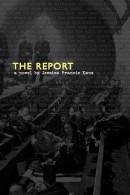 Kane’s first novel begins in London in 1943, with Brits wary of retaliation for a recent and devastating bombing of Berlin. In this heightened state, a siren sends them toward tube station shelters with a particularly quick step. At the Bethnal Green station, something happens in the crowd, a disturbance that leads to a crush. This real-life incident, which killed 173 people, provides the basis for Kane’s gentle, smart reimagining.
Kane’s first novel begins in London in 1943, with Brits wary of retaliation for a recent and devastating bombing of Berlin. In this heightened state, a siren sends them toward tube station shelters with a particularly quick step. At the Bethnal Green station, something happens in the crowd, a disturbance that leads to a crush. This real-life incident, which killed 173 people, provides the basis for Kane’s gentle, smart reimagining.  Juers’ book, which tracks the lives of brother-writers Heinrich and Thomas Mann, Heinrich’s wife, Nelly, and their social circle with both heavy research and significant use of imagination, has garnered some of the most positive and engaged reviews of the year. In the Guardian,
Juers’ book, which tracks the lives of brother-writers Heinrich and Thomas Mann, Heinrich’s wife, Nelly, and their social circle with both heavy research and significant use of imagination, has garnered some of the most positive and engaged reviews of the year. In the Guardian,  Newfoundland-born Crummey has been nominated for Canada’s most prestigious literary prizes. His latest novel, flavored with magical realism and spanning six generations in Newfoundland, opens with a living man emerging from the belly of a beached whale. The man lives the rest of his life without speaking a word, but the rest of the members of Crummey’s sprawling cast speak in “bawdy and blasphemous” dialogue,
Newfoundland-born Crummey has been nominated for Canada’s most prestigious literary prizes. His latest novel, flavored with magical realism and spanning six generations in Newfoundland, opens with a living man emerging from the belly of a beached whale. The man lives the rest of his life without speaking a word, but the rest of the members of Crummey’s sprawling cast speak in “bawdy and blasphemous” dialogue,  For the past several years, Philip Connors, once a copy editor at the Wall Street Journal, has spent part of the spring and summer spotting fires from a small perch overlooking New Mexico’s Gila Wilderness. Only 10% of the country’s lookout towers remain, but Connors clings to the assignment while he can. He calls it “a blend of monotony, geometry, and poetry, with healthy dollops of frivolity and sloth,” as well as the best job he can imagine. His memoir about the solitary time he has spent there is alternately plainspoken and poetic, and a mental escape hatch for anyone who reads it while sitting in a large city. It has won him comparisons to Annie Dillard and Thoreau, among others.
For the past several years, Philip Connors, once a copy editor at the Wall Street Journal, has spent part of the spring and summer spotting fires from a small perch overlooking New Mexico’s Gila Wilderness. Only 10% of the country’s lookout towers remain, but Connors clings to the assignment while he can. He calls it “a blend of monotony, geometry, and poetry, with healthy dollops of frivolity and sloth,” as well as the best job he can imagine. His memoir about the solitary time he has spent there is alternately plainspoken and poetic, and a mental escape hatch for anyone who reads it while sitting in a large city. It has won him comparisons to Annie Dillard and Thoreau, among others. Marable spent more than a decade working on his revisionist biography of Malcolm X, and died three days before its publication, at the age of 60.
Marable spent more than a decade working on his revisionist biography of Malcolm X, and died three days before its publication, at the age of 60.  In the New York Observer,
In the New York Observer,  Every reader has biases; about books, yes, but also about life. One of my biases is against tech-utopianism. I run a website. I play a lot of online Scrabble, and played a lot of Nintendo Tetris in the mid-1990s. I opt to spend a lot of time with my computer. But I wish I spent less. And I think my generation (and those younger) has a relationship to video games that can only be called regressive. So the big idea in Jane McGonigal’s Reality is Broken — that video games should be embraced, and designed to do things like help us cure world hunger and learn to love household chores — strikes me as deeply unappealing, if not straight-up bonkers.
Every reader has biases; about books, yes, but also about life. One of my biases is against tech-utopianism. I run a website. I play a lot of online Scrabble, and played a lot of Nintendo Tetris in the mid-1990s. I opt to spend a lot of time with my computer. But I wish I spent less. And I think my generation (and those younger) has a relationship to video games that can only be called regressive. So the big idea in Jane McGonigal’s Reality is Broken — that video games should be embraced, and designed to do things like help us cure world hunger and learn to love household chores — strikes me as deeply unappealing, if not straight-up bonkers. Rhodes-Pitts grew up in Texas and attended Harvard, but her mind growing up was often in Harlem. Her book takes its title from an essay by Ralph Ellison, and in it she mixes her personal feelings about and experiences in the neighborhood with its history, including its appearances in literature.
Rhodes-Pitts grew up in Texas and attended Harvard, but her mind growing up was often in Harlem. Her book takes its title from an essay by Ralph Ellison, and in it she mixes her personal feelings about and experiences in the neighborhood with its history, including its appearances in literature. In Vann’s first novel, Gary and Irene, married three decades, test their already strained union by attempting to build a cabin on a remote, barely populated Alaska island. It’s Gary’s crazy idea, and several reviewers say the book fits neatly into a certain obsessed-male paradigm. Kevin Canty
In Vann’s first novel, Gary and Irene, married three decades, test their already strained union by attempting to build a cabin on a remote, barely populated Alaska island. It’s Gary’s crazy idea, and several reviewers say the book fits neatly into a certain obsessed-male paradigm. Kevin Canty  This meditative, slender book, partly inspired by the travel journals of 17th-century Japanese poet Basho, is part of the Dossier series published by Ugly Duckling Presse, a collection of books that includes titles like Notes on Conceptualisms and Made-Up Interviews With Imaginary Artists. Two of the book’s four sections feature selections from Fitch’s walking project: hourlong walks through Manhattan, each described in 60 sentences. An excerpt:
This meditative, slender book, partly inspired by the travel journals of 17th-century Japanese poet Basho, is part of the Dossier series published by Ugly Duckling Presse, a collection of books that includes titles like Notes on Conceptualisms and Made-Up Interviews With Imaginary Artists. Two of the book’s four sections feature selections from Fitch’s walking project: hourlong walks through Manhattan, each described in 60 sentences. An excerpt: Acclaimed novelist Andrew O’Hagan’s latest is a curveball narrated by Marilyn Monroe’s dog. The facts seem to be that Frank Sinatra gave her a pup, and that Monroe playfully named him Mafia Honey (Maf for short). O’Hagan takes this premise and runs with it, birthing the terrier on a Scottish farm and sending him on a quick tour of Bloomsbury before landing him in Marilyn’s stateside bosom.
Acclaimed novelist Andrew O’Hagan’s latest is a curveball narrated by Marilyn Monroe’s dog. The facts seem to be that Frank Sinatra gave her a pup, and that Monroe playfully named him Mafia Honey (Maf for short). O’Hagan takes this premise and runs with it, birthing the terrier on a Scottish farm and sending him on a quick tour of Bloomsbury before landing him in Marilyn’s stateside bosom.  Twain famously asked that his autobiographical writings, mostly dictated in the final years of his life, be published 100 years after his death. His estate has partly defied that request, and publishers have bowdlerized the material over the years for various books. But this doorstop is the first of three planned volumes that will see the publication of the autobiography as Twain intended it. The first volume includes more previously published material than the next two will.
Twain famously asked that his autobiographical writings, mostly dictated in the final years of his life, be published 100 years after his death. His estate has partly defied that request, and publishers have bowdlerized the material over the years for various books. But this doorstop is the first of three planned volumes that will see the publication of the autobiography as Twain intended it. The first volume includes more previously published material than the next two will.  Galgut’s novel, shortlisted for this year’s Booker Prize, is divided into three sections, “The Follower,” “The Lover,” and “The Guardian,” each of them following a character named Damon and each set in a different country. As
Galgut’s novel, shortlisted for this year’s Booker Prize, is divided into three sections, “The Follower,” “The Lover,” and “The Guardian,” each of them following a character named Damon and each set in a different country. As  Nunez’s sixth novel joins the ever-growing shelf of Apocalyterature. Set after an influenza pandemic has swept through America, Salvation City follows a boy named Cole, whose liberal parents were KO’ed by the plague. He ends up in the titular community, a religious community where he’s raised by doctrinaire Christians. Mark Athitakis says that the dystopian backdrop
Nunez’s sixth novel joins the ever-growing shelf of Apocalyterature. Set after an influenza pandemic has swept through America, Salvation City follows a boy named Cole, whose liberal parents were KO’ed by the plague. He ends up in the titular community, a religious community where he’s raised by doctrinaire Christians. Mark Athitakis says that the dystopian backdrop  Yu’s first novel (his debut was a collection of stories called
Yu’s first novel (his debut was a collection of stories called  When James Ellroy was 10 years old, his mother was murdered, and the case was never solved. This fact has famously inspired his career as a hard-boiled writer, never more directly than in
When James Ellroy was 10 years old, his mother was murdered, and the case was never solved. This fact has famously inspired his career as a hard-boiled writer, never more directly than in  Emma Donoghue’s Room, shortlisted for this year’s Booker Prize, takes its premise from the horrific real-life experiences of Elisabeth Fritzl and Jaycee Dugard, two women who were held captive for years and bore children by their captors. Room tells a story like this from the perspective of the child, in this fictional case a 5-year-old named Jack who has never known life outside of his mother’s small cell.
Emma Donoghue’s Room, shortlisted for this year’s Booker Prize, takes its premise from the horrific real-life experiences of Elisabeth Fritzl and Jaycee Dugard, two women who were held captive for years and bore children by their captors. Room tells a story like this from the perspective of the child, in this fictional case a 5-year-old named Jack who has never known life outside of his mother’s small cell. 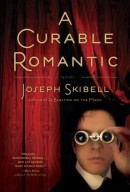 Judging by
Judging by  Baldwin’s novel is one of the more widely noticed debuts of 2010. In it, Victor, a leading Alzheimer’s researcher living in Maine, is still struggling to cope with the death of his wife, Sara, who was killed in a car accident three years earlier. Victor’s grief is complicated by the discovery of note cards on which Sara recorded her thoughts about their relationship—thoughts that don’t always match Victor’s.
Baldwin’s novel is one of the more widely noticed debuts of 2010. In it, Victor, a leading Alzheimer’s researcher living in Maine, is still struggling to cope with the death of his wife, Sara, who was killed in a car accident three years earlier. Victor’s grief is complicated by the discovery of note cards on which Sara recorded her thoughts about their relationship—thoughts that don’t always match Victor’s.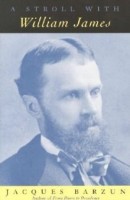 Cultural historian Barzun, now 102 years old, published A Stroll with William James in 1983 to acknowledge “an intellectual debt.” In an introductory note, he wrote, “[W]hile telling here at what a high rate I have benefited from keeping an open account with William James, I know I cannot hope to do justice to the man or to the fullness of his thought.” His goal was to “simply show what [James'] works have meant to me and can mean to others.” He continued:
Cultural historian Barzun, now 102 years old, published A Stroll with William James in 1983 to acknowledge “an intellectual debt.” In an introductory note, he wrote, “[W]hile telling here at what a high rate I have benefited from keeping an open account with William James, I know I cannot hope to do justice to the man or to the fullness of his thought.” His goal was to “simply show what [James'] works have meant to me and can mean to others.” He continued: Louis Menand’s portrait of four American intellectuals and pragmatism’s origins in the wake of the Civil War won a Pulitzer Prize in 2002. The book’s central figures are William James, Oliver Wendell Holmes, Jr., Charles Sanders Peirce, and John Dewey. The first three were members of the titular conversational club, which met in Cambridge, Massachusetts, throughout 1872.
Louis Menand’s portrait of four American intellectuals and pragmatism’s origins in the wake of the Civil War won a Pulitzer Prize in 2002. The book’s central figures are William James, Oliver Wendell Holmes, Jr., Charles Sanders Peirce, and John Dewey. The first three were members of the titular conversational club, which met in Cambridge, Massachusetts, throughout 1872. Norwegian novelist Per Petterson’s follow-up to the surprise hit
Norwegian novelist Per Petterson’s follow-up to the surprise hit  Ross’ debut novel describes the marriage of David and Alice Pepin. Alice, who’s allergic to peanuts, is found dead with one lodged in her throat. The cops assigned to figure out whether David is to blame have serious relationship issues of their own. The book, a thorough investigation of marriage with references to video-game design, M. C. Escher, and Möbius strips, has received praise for its prose and condemnation for its cleverness. This dual reaction is found in almost every major review.
Ross’ debut novel describes the marriage of David and Alice Pepin. Alice, who’s allergic to peanuts, is found dead with one lodged in her throat. The cops assigned to figure out whether David is to blame have serious relationship issues of their own. The book, a thorough investigation of marriage with references to video-game design, M. C. Escher, and Möbius strips, has received praise for its prose and condemnation for its cleverness. This dual reaction is found in almost every major review.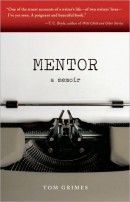 Grimes’ memoir recounts his time at the famed Iowa Writers’ Workshop, and his friendship with Frank Conroy, the head of the program and the mentor of the title. Grimes was Conroy’s favorite student, and his debut baseball-themed novel, Season’s End was supposed to send him on his way to literary stardom. Things didn’t turn out that way.
Grimes’ memoir recounts his time at the famed Iowa Writers’ Workshop, and his friendship with Frank Conroy, the head of the program and the mentor of the title. Grimes was Conroy’s favorite student, and his debut baseball-themed novel, Season’s End was supposed to send him on his way to literary stardom. Things didn’t turn out that way. In the third of Pilch’s novels to be translated into English (I recommended the second, The Mighty Angel,
In the third of Pilch’s novels to be translated into English (I recommended the second, The Mighty Angel,  Mad Men Unbuttoned is not officially affiliated with the popular TV series, so if you’re looking for glossy photos of Don Draper and cohorts, you’ll have to look elsewhere. Vargas-Cooper (who still maintains
Mad Men Unbuttoned is not officially affiliated with the popular TV series, so if you’re looking for glossy photos of Don Draper and cohorts, you’ll have to look elsewhere. Vargas-Cooper (who still maintains  Cohen’s third novel is getting attention for its length (800 pages), its inventiveness with language (downright Joycean, some say), and its conceit (near the turn of the millennium, a mysterious plague wipes out all the world’s Jews but for one, Benjamin Israelien). In the Forward,
Cohen’s third novel is getting attention for its length (800 pages), its inventiveness with language (downright Joycean, some say), and its conceit (near the turn of the millennium, a mysterious plague wipes out all the world’s Jews but for one, Benjamin Israelien). In the Forward,  To write this, the first biography of the Nobel Prize-winning author of Lord of the Flies, Carey, a prominent British critic and academic, was given access to unpublished novels and thousands of pages of private journals.
To write this, the first biography of the Nobel Prize-winning author of Lord of the Flies, Carey, a prominent British critic and academic, was given access to unpublished novels and thousands of pages of private journals. 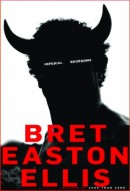 Ellis’ 1985 debut,
Ellis’ 1985 debut,  Chicago policeman Martin Preib wrote
Chicago policeman Martin Preib wrote 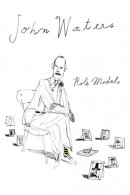 In his new memoir, Waters, once infamous for pushing past the limits of taste on film and now famous for originating a kitschy aesthetic that is firmly entrenched in the mainstream, writes about people he has met and admired, from popular stars to the marginalized to the down and out.
In his new memoir, Waters, once infamous for pushing past the limits of taste on film and now famous for originating a kitschy aesthetic that is firmly entrenched in the mainstream, writes about people he has met and admired, from popular stars to the marginalized to the down and out. The concluding novel in Doyle’s “Last Roundup” trilogy about a character named Henry Smart whose long life coincides with the 20th-century history of Ireland,
The concluding novel in Doyle’s “Last Roundup” trilogy about a character named Henry Smart whose long life coincides with the 20th-century history of Ireland,  Daniel Okrent’s biggest impact on the culture (and certainly on my life) might always be
Daniel Okrent’s biggest impact on the culture (and certainly on my life) might always be  Smiley’s 13th novel has garnered very mixed reactions. It follows a character named Margaret from 1883 to 1942, from a troubled childhood (two brothers die, her father commits suicide) to a troubled marriage with an eccentric (insane?) astronomer named Andrew. In
Smiley’s 13th novel has garnered very mixed reactions. It follows a character named Margaret from 1883 to 1942, from a troubled childhood (two brothers die, her father commits suicide) to a troubled marriage with an eccentric (insane?) astronomer named Andrew. In  St. Clair McKelway, a reporter for The New Yorker from the 1930s to the 1960s and possessor of the greatest author name of all time (pending future discoveries), had a way with opening sentences. Like this one:
St. Clair McKelway, a reporter for The New Yorker from the 1930s to the 1960s and possessor of the greatest author name of all time (pending future discoveries), had a way with opening sentences. Like this one: Raves all around for a book that sounds irresistible, Ben Macintyre’s
Raves all around for a book that sounds irresistible, Ben Macintyre’s  Allende’s new novel, set in what is now Haiti and New Orleans, focuses on the life of a slave named Zarité. In the San Francisco Chronicle,
Allende’s new novel, set in what is now Haiti and New Orleans, focuses on the life of a slave named Zarité. In the San Francisco Chronicle,  Eisenberg has published four collections of highly praised stories over the course of 25 years. They’re all here, in a book that reaches nearly a thousand pages.
Eisenberg has published four collections of highly praised stories over the course of 25 years. They’re all here, in a book that reaches nearly a thousand pages. 